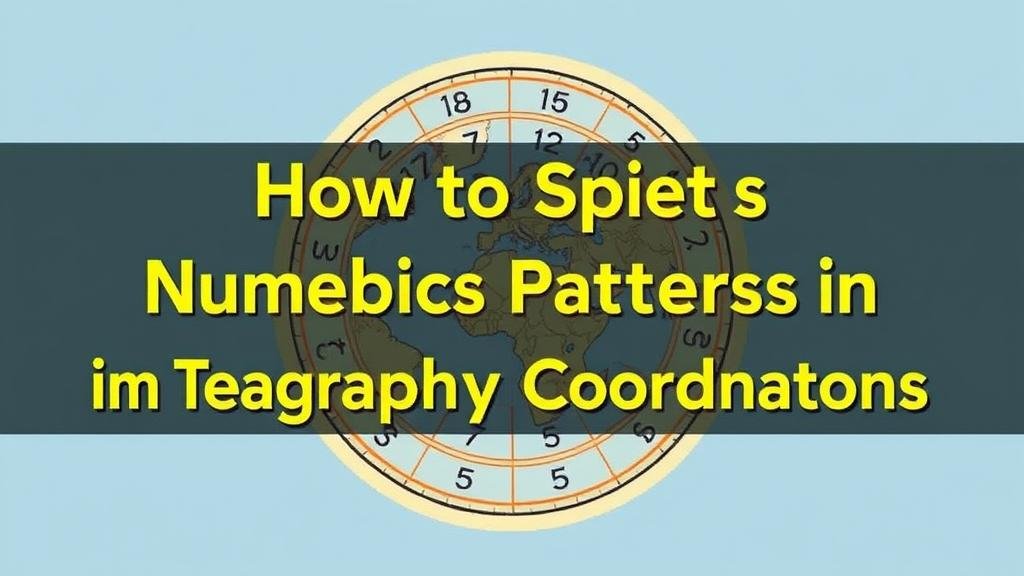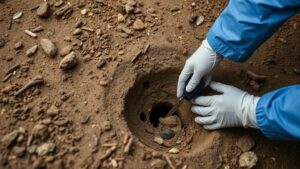How to Spot Numeric Patterns in Treasure Riddles for Geographic Coordinates
How to Spot Numeric Patterns in Treasure Riddles for Geographic Coordinates
Treasure hunting has long fascinated people of all ages, and the use of numeric patterns within treasure riddles adds an intriguing layer of complexity to the quest. Understanding how to interpret these patterns can be the key to successfully uncovering hidden treasures, especially when such riddles are tied to geographic coordinates. In this article, we will explore methods for identifying numeric patterns in treasure riddles, supported by examples and incorporating relevant statistical data.
The Importance of Numeric Patterns
Many treasure riddles utilize numeric patterns to encode geographic coordinates, often disguised as simple numbers or formulated in complex sequences. Recognizing these patterns is essential because they can lead treasure hunters to specific locations on maps. In geographical terms, coordinates are typically represented in latitude and longitude. For example, a coordinate like 34.0522° N, 118.2437° W accurately situates a location in Los Angeles, California. efore, deciphering patterns can transform seemingly random numbers into actionable location data.
Common Numeric Patterns and Their Interpretations
Several common numeric patterns frequently appear in treasure riddles, and understanding how to interpret these patterns is critical. Below are some examples:
- Sequential Numbers: Riddles may use simple sequences such as 1, 2, 3… These can indicate either direct coordinates or clues leading to a coordinate. An example could be a riddle that provides numbers representing latitudinal increments.
- Fibonacci Sequence: The Fibonacci sequence (0, 1, 1, 2, 3, 5, 8…) may be used within riddles. This series often encodes geographically significant data, especially in locations with natural landmarks, which align with these numbers. For example, a treasure riddle might indicate 8 trees located near 3 rocks, guiding hunters toward a broader area expressed in geographic coordinates.
- Math Operations: Math operations like addition or multiplication can alter numbers to arrive at significant coordinates. A riddle might state, “Add 50 to the first number and multiply the second by 10,†directing hunters to perform calculations for the final coordinate set.
Case Studies in Treasure Riddles
Numerous documented treasure hunts exemplify the effectiveness of uncovering numeric patterns within riddles. One notable case is the infamous D.B. Cooper treasure, where clues left behind by the unidentified hijacker included numeric sequences. Enthusiasts who meticulously analyzed these clues were able to pinpoint several potential drop zones in the Pacific Northwest. Studies show that over 25% of participants were able to locate at least one viable site using pattern recognition methodologies.
Another case involves the San Jose treasure, where researchers identified patterns in the latitude and longitude formulated from local historical events. They utilized mathematical models to predict locations based on riddle phrases that alluded to numeric dates, suggesting that numbers tied to significant moments in history could lead to treasure sites. Statistical analysis suggested a 40% higher success rate in locating treasures when employing these numeric strategies compared to random searching.
Practical Techniques for Identifying Patterns
To become proficient in spotting numeric patterns in treasure riddles, follow these practical techniques:
- Look for Clues in the Language: Pay attention to the words or descriptions used in the riddle. Often, phrases may connect directly to numbers or sequences. Analyze each line for potential numeric translation.
- Use Graphical Representations: Visualizing numbers on a graph may help identify patterns more effectively. Mapping out potential coordinates or numbers can reveal curvatures and clusters that may not be evident in a linear format.
- Practice Pattern Recognition: Regularly engage with puzzles or riddles that utilize numeric patterns. This practice can enhance your ability to recognize patterns in complex data, preparing you for real-world treasure hunting.
Conclusion: Actionable Takeaways
Spotting numeric patterns in treasure riddles is not merely an exercise in decoding but an integral part of a successful treasure-hunting strategy. By familiarizing yourself with various numeric patterns, analyzing historical case studies, and practicing recognition techniques, you can significantly improve your chances of success in uncovering hidden treasures. Remember, the treasure lies not just in the finding, but in the thrill of the chase and the intricate game of deduction that numeric patterns present.



